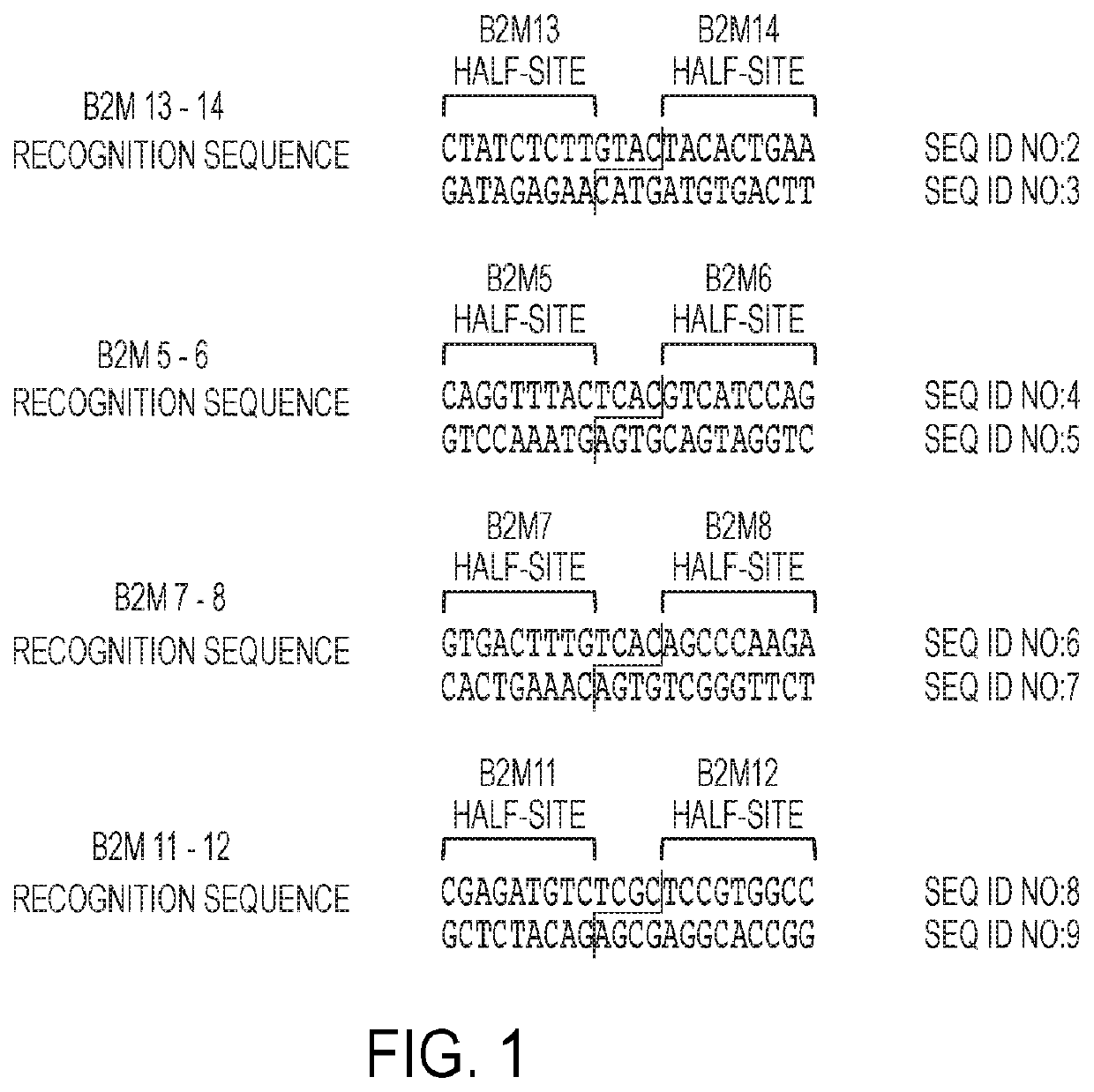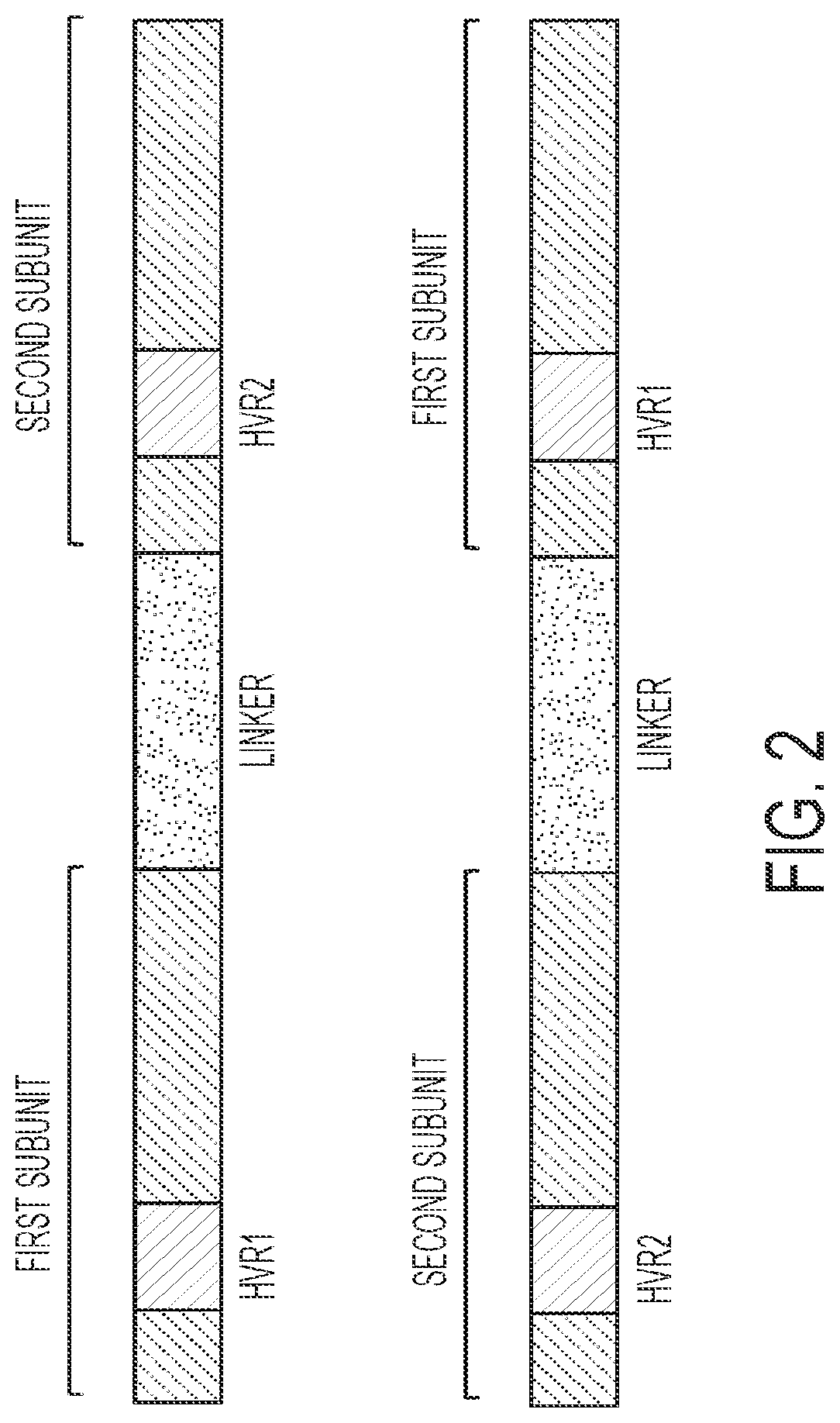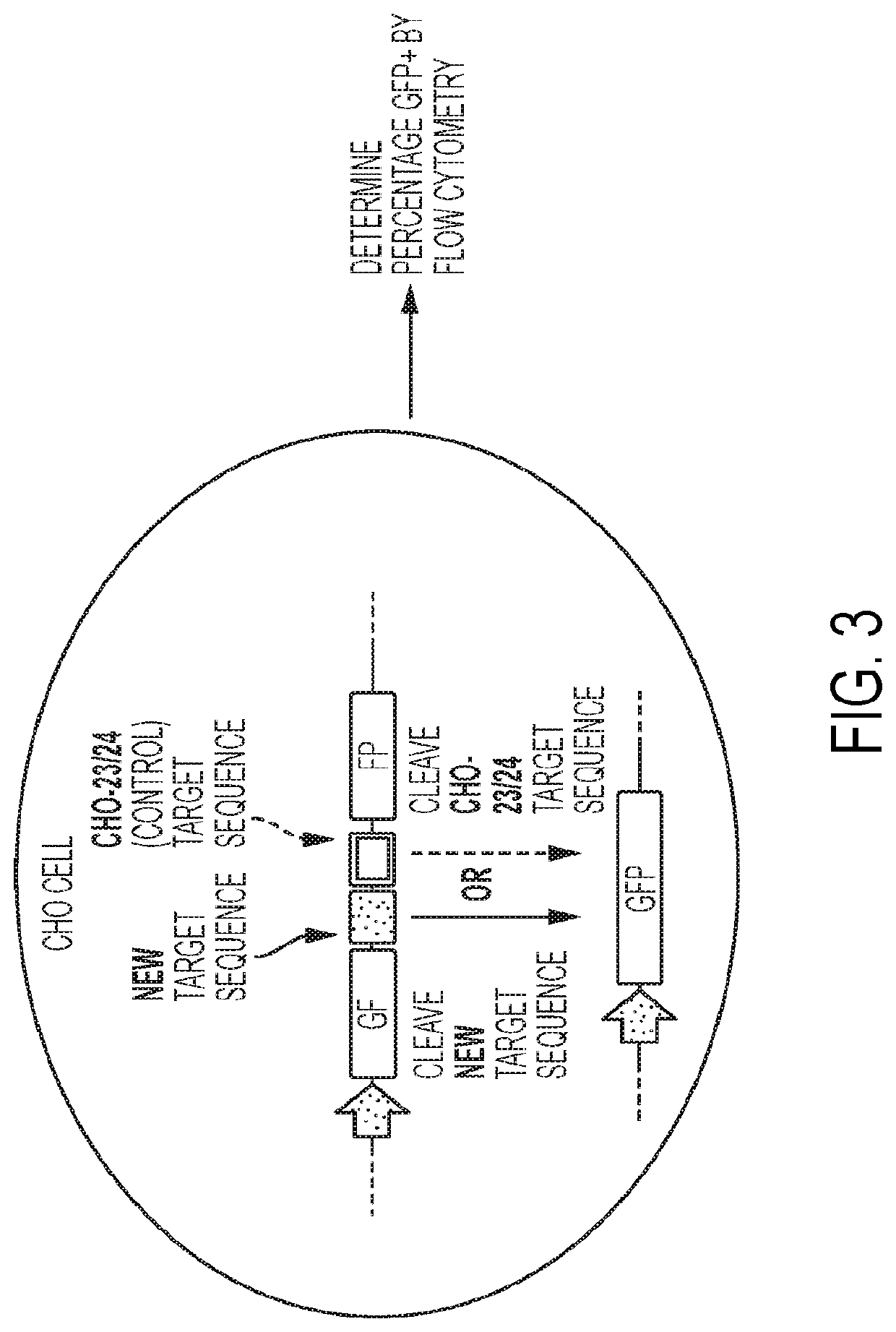Engineered meganucleases with recognition sequences found in the human beta-2 microglobulin gene
a technology of beta-2 microglobulin and recognition sequence, which is applied in the field of molecular biology and recombinant nucleic acid technology, can solve the problems of limited approach and limited immunotherapy, and achieve the effects of reducing alloreactivity, reducing allogenicity, and reducing cell surface expression of beta-2 microglobulin
- Summary
- Abstract
- Description
- Claims
- Application Information
AI Technical Summary
Benefits of technology
Problems solved by technology
Method used
Image
Examples
example 1
Characterization of Meganucleases that Recognize and Cleave B2M Recognition Sequences
1. Meganucleases that Recognize and Cleave the B2M 13-14 Recognition Sequence
[0579]Recombinant meganucleases (SEQ ID NOs:12-100), collectively referred to herein as “B2M 13-14 meganucleases,” were engineered to recognize and cleave the B2M 13-14 recognition sequence (SEQ ID NO:2), which is present in the human beta-2 microglobulin gene (SEQ ID NO:1). Each B2M 13-14 recombinant meganuclease comprises an N-terminal nuclease-localization signal derived from SV40, a first meganuclease subunit, a linker sequence, and a second meganuclease subunit. A first subunit in each B2M 13-14 meganuclease binds to the B2M13 recognition half-site of SEQ ID NO:2, while a second subunit binds to the B2M14 recognition half-site (see FIG. 1).
[0580]B2M13-binding subunits and B2M14-binding subunits each comprise a 56 base pair hypervariable region, referred to as HVR1 and HVR2, respectively. B2M13-binding subunits are high...
example 2
Suppression of Cell-Surface B2M Expression in T Cells
1. Suppression of B2M Cell-Surface Expression in Human T Cells
[0595]This study demonstrated that a select number of B2M 13-14 meganucleases encompassed by the disclosure could cleave the B2M 13-14 recognition sequence in human T cells obtained from a donor, resulting in suppression of B2M cell-surface expression. To test whether B2M meganucleases could cleave the B2M 13-14 recognitions sequence in human T cells, donor cells were stimulated with anti-CD3 and anti-CD28 antibodies for 3 days, then electroporated with mRNA encoding a given B2M 13-14 meganuclease (1 μg) using the Amaxa 4D-Nucleofector (Lonza) according to the manufacturer's instructions. As a positive control, cells were mock electroporated. In an additional control for electroporation efficiency, cells were electroporated with mRNA encoding GFP (1 μg). At 3 days post-electroporation, cells were stained with an antibody recognizing β-2 microglobulin (BD Biosciences) an...
example 3
Double Knockout of Cell-Surface B2M and T Cell Receptor in T Cells
1. Double Knockout by Simultaneous Nucleofection
[0607]In some cases, it may be desirable to knockout both the beta-2 microglobulin gene and a native T cell receptor (TCR). The inventors have previously described meganucleases designed to cause a double strand break in the T cell receptor alpha constant gene (SEQ ID NO:127) which, in turn, disrupts cell-surface expression of the endogenous TCR. One such meganuclease is referred to as TRC 1-2x.87 EE (SEQ ID NO:131), which targets the recognition sequence set forth in SEQ ID NO:128. Loss of the TCR can be observed by staining cells with an antibody against the CD3 protein, which is only expressed on the surface of cells if the TCR is expressed.
[0608]To test whether TRC 1-2x.87 EE and B2M 13-14 meganucleases could be used to generate a population of cells in which both the TRC gene and the B2M gene were knocked out, experiments were performed in which separate mRNAs encod...
PUM
| Property | Measurement | Unit |
|---|---|---|
| Fraction | aaaaa | aaaaa |
| Fraction | aaaaa | aaaaa |
| Mass | aaaaa | aaaaa |
Abstract
Description
Claims
Application Information
 Login to View More
Login to View More - R&D
- Intellectual Property
- Life Sciences
- Materials
- Tech Scout
- Unparalleled Data Quality
- Higher Quality Content
- 60% Fewer Hallucinations
Browse by: Latest US Patents, China's latest patents, Technical Efficacy Thesaurus, Application Domain, Technology Topic, Popular Technical Reports.
© 2025 PatSnap. All rights reserved.Legal|Privacy policy|Modern Slavery Act Transparency Statement|Sitemap|About US| Contact US: help@patsnap.com



